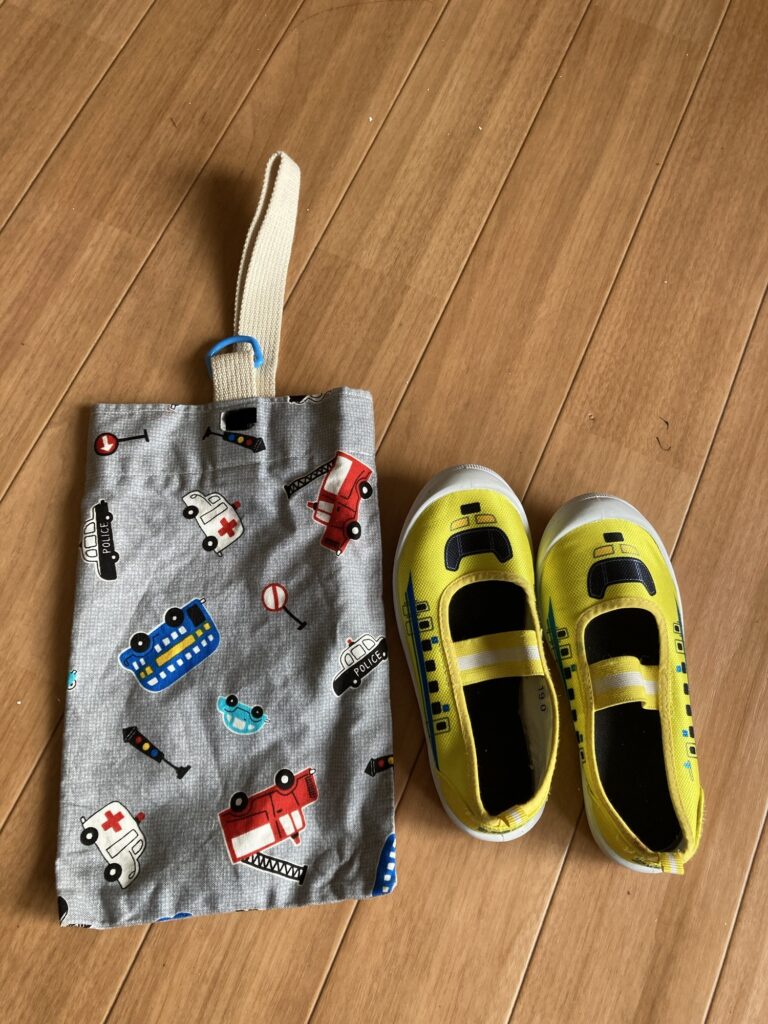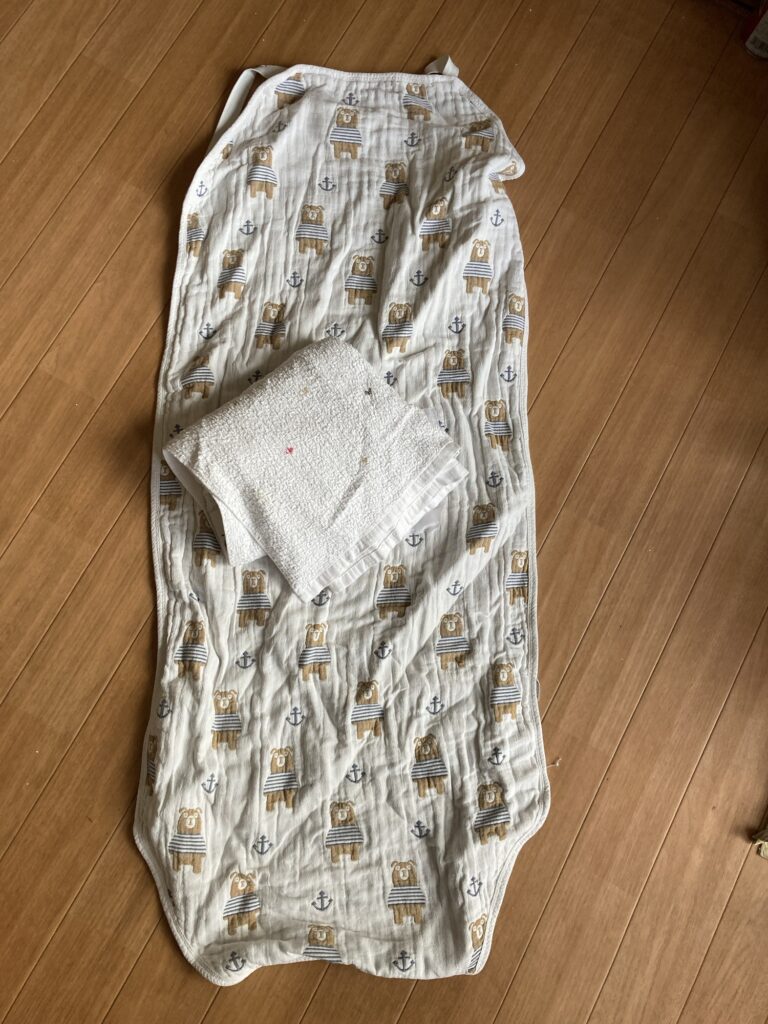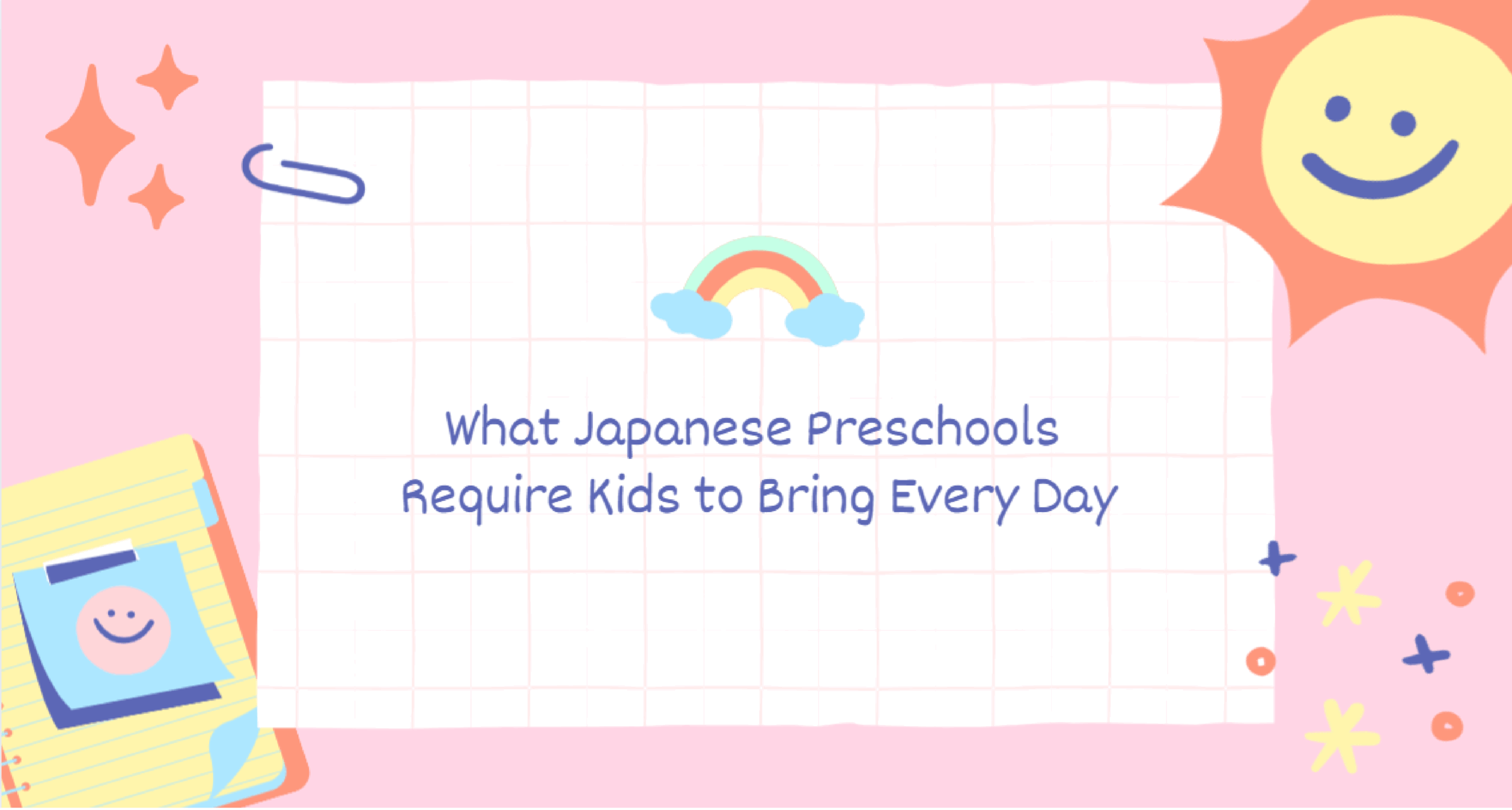In Japanese preschools, children bring several items every day to stay comfortable, clean, and safe. Each item has a purpose, and it’s interesting for both local and international parents to see how daily life works here.
Note: The items listed below are typical for a licensed (認可, “Ninka”) preschool in Japan. The required items may vary in unlicensed (認可外, “Ninka-gai”) preschools or daycare centers.
Since licensed preschools are basically free (lunch fees are required to pay separately) , parents are required to prepare more items for their children. In contrast, unlicensed preschools are more flexible—children often don’t need to bring extra clothes because the school will wash them, and diapers can usually be provided through subscription services, making it possible to attend almost hands-free.
Types of Preschools in Japan
- Licensed Preschools (認可保育園 / Ninka Hoikuen)
- Meet strict government standards for safety, staff-to-child ratio, and facilities.
- Daily routines and required items (like cot covers, indoor shoes, hats) are usually strictly defined.
- Unlicensed Preschools / Daycare (認可外保育園 / Ninka-gai Hoikuen)
- Smaller, privately run facilities that may have more flexible rules.
- Daily items required can vary and may be less standardized.
- Kindergarten (幼稚園 / Yōchien)
- Often caters to children aged 3–6.
- Focuses more on early education and play rather than full-day childcare.
- Required items may include a backpack, lunchbox, and indoor shoes, but naps and cot covers are less common.
What Japanese Preschools Require Kids to Bring Every Day: Indoor Shoes & Shoe Bag

- Indoor shoes (Uwabaki): These are worn only inside the classroom. Kids can choose their favorite color or design. Our son’s shoes have a Plarail train design.
- Shoe bag: Used to store the indoor shoes. Some parents make them by hand, while others buy them online or in stores.
What Japanese Preschools Require Kids to Bring Every Day: Hat
The preschool provides hats in different colors for each grade. Our son’s hat is orange, and our daughter’s is pink. At my nursery school, this hat was provided by the school. What we need to do is wash them on weekends and bring them back on next Monday. Hats are always worn when going outside to prevent children from getting lost and also to provide sun protection.
What Japanese Preschools Require Kids to Bring Every Day: Cot Cover & Nap Items

A cot is a small bed used for naptime in preschool, and a cot cover and a bath towel used as a blanket needs each child’s name is sewn on the cover, which can be a bit tricky to prepare.
Since I’m hopeless at sewing, I had to stitch name tags onto each cot cover. Every child needed two sets of covers and a bath towel, which meant four sets total—eight rounds of sewing for me! It was a hefty task while working full-time. I grabbed some fabric adhesive tape from Daiso, thinking I was set. A few washes later it peeled off—so I ended up stitching the labels by hand after all.
At some nursery schools, parents are expected to set up the cot cover every morning and arrange clothes, hats, socks, and bibs in their assigned places. Each step is minor, but added up, it can be surprisingly tricky.
What Japanese Preschools Require Kids to Bring Every Day: Daily Clothes & Towels
Each day, children need a top, underwear, and pants as a change of clothes. For younger children, three small hand towels are prepared for wiping hands and face (one for lunch, two for snacks). Plastic bags and two bibs are provided daily and washed after each use.
What Japanese Preschools Require Kids to Bring Every Day: Diapers & Toilet Training
Children who are toilet-training bring their own training pants. Diapers can be delivered via a subscription service (around ¥2,200/month), but we provide our own since our child uses fewer diapers now. Everything must be labeled with the child’s name—cot cover, clothes, towels, and each diaper. My 5-year-old son helps write his name in hiragana as practice, but name stamps and stickers are also widely used.
Summary: What Japanese Preschools Require Kids to Bring Every Day
Every item brought to Japanese preschools has a purpose:
- Keeps children safe and comfortable
- Helps teachers manage belongings and prevent loss
- Maintains a clean and organized environment
For international families, seeing all these daily preparations is often fascinating. By being organized, children and parents can enjoy preschool life with peace of mind!



コメント